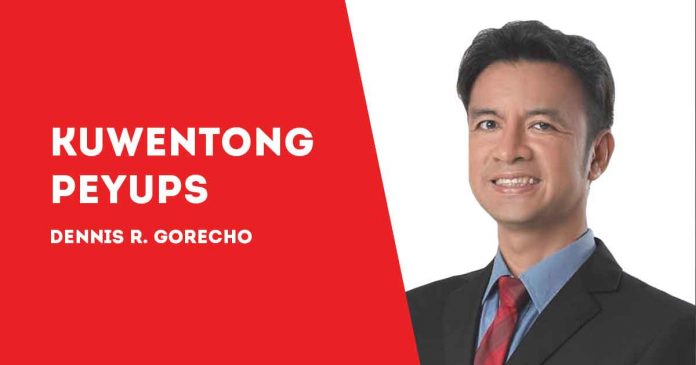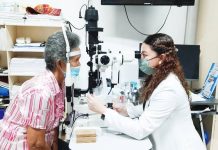
“LET US make the effort to remind the people not to forget Edsa. Let its light remain uncovered. Its work remains unfinished.”
Thus declared politically outspoken Bishop Broderick Pabillo, D.D., in his homily back in February during the mass of the 39th anniversary of the Edsa People Power Revolution held at the Edsa Shrine.
Pabillo acknowledged that “preserving the legacy and memories of Edsa People Power I take serious work, but one must not give up in sharing the truth behind this significant chapter in our nation’s history.”
Pabillo looked back at the Marcos dictatorship from the early 1970s to the mid-1980s when the situation seemed hopeless until one day, in the words of the Bible, “light has shone.”
Pabillo delivered his homily days after the Sandiganbayan issued a resolution dismissing a P5 million ill-gotten wealth case against the late President Ferdinand Marcos, Sr., and his wife, Imelda due to the prosecution’s “unexplained inaction for decades.”
The anti-graft court junked the P5 million ill-gotten wealth case under Civil Case 0032 because of the state prosecutors’ unwillingness to pursue the case since 1994.
Civil Case 0032 alleged that the Marcos couple and a certain Fernando Timbol unlawfully acquired vehicles and household appliances that should be returned to the government.
In December last year, the same division issued separate resolutions dismissing eight other ill-gotten wealth cases that were filed against Marcos Sr., Imelda, and the late tycoon and Marcos crony Eduardo Cojuangco Jr.
The cases involved the purchase of First United Bank, the predecessor of United Coconut Planters Bank; San Miguel Corp. shares; the creation of companies out of coco levy funds collected during the Marcos years; the formation and operation of the Bugsuk project and the award of P998 million in damages to agricultural investors; the purchases and settlement of the accounts of oil mills; the unlawful disbursement and dissipation of coco levy funds; the acquisition of Pepsi-Cola; and the grant of behest loans and contracts.
The Supreme Court in PCGG v. Peña (GR L-77663, April 12, 1988) earlier said that the Marcos dictatorship is a “well-entrenched plundering regime of twenty years.”
The court noted the “magnitude of the Marcos regime’s ‘organized pillage’ and the ingenuity of the plunderers and pillagers with the assistance of the experts and best legal minds available in the market.”
Former SC chief justice Artemio Panganiban earlier enumerated some of the Marcos assets found by the Supreme Court to be “ill-gotten”:
* $658 million (Republic v. Sandiganbayan, (G.R. No. 152154. July 15, 2003)
* PLDT shares (Yuchengco v. Sandiganbayan, GR 149802, January 20, 2006
* $3.37 million (Marcos Jr. v. Republic, GR 189434 April 25, 2012)
* Collection of jewelry (Estate of Marcos v. Republic (GR 213027 January 18, 2017)
The cases applied the legal principle “whenever any public officer or employee has acquired during his incumbency an amount or property which is manifestly out of proportion to his salary as such public officer or employee and to his other lawful income and the income from legitimately acquired property, said property shall be presumed prima facie to have been unlawfully acquired. (Sections 2 and 6 of RA 1379)
In Republic vs. Sandiganbayan, the Swiss deposits that were transferred to and were deposited in escrow at the Philippine National Bank in the estimated aggregate amount of $658,175,373.60 as of January 31, 2002, plus interest, were forfeited in favor of the Republic.
In Yuchengco v. Sandiganbayan, the Court ruled that the 111,415 Philippine Telecommunications Investment Corp. (PTIC) shares being held by Prime Holdings, Inc. (PHI) bore the character of ill-gotten wealth, whether they were in the hands of Marcos or of Cojuangco. It noted that Marcos owned PHI, and that all the incorporators had acted under his direction.
In Marcos Jr. v. Republic, all the assets of Arelma, S.A., an entity created by Marcos Sr., with an estimated aggregate amount of USD 3,369,975 as of 1983, were forfeited in favor of the government. It was purportedly organized for the purpose of hiding ill-gotten wealth.
In Estate of Marcos v. Republic, the pieces of jewelry of the so called “Malacañang Collection” seized from Malacañang after February 25, 1986 and transferred to the Central Bank on March 1, 1986 with an estimated value of $110,055 (low estimate) to $153,089 (high estimate) was declared ill-gotten wealth.
“The greatest threat to freedom is the shortness of human memory,” said former Supreme Court Chief Justice Claudio Teehankee in the case of Olaguer v. Military Commission (GR L-54558 May 22, 1987) adding that “While the people for the most part suffered in silence and waited, others never gave up the struggle for truth, freedom, justice and democracy, a common commitment which is what makes a people a nation instead of a gathering of self-seeking individuals.”
In Dizon v. Eduardo (GR L-59118 March 3, 1988), the Court noted that “the martial law imposed in Septemaber 1972 by Marcos, destroyed in one fell swoop the Philippines’ 75 years of stable democratic traditions.”
***
“Peyups” is the moniker of University of the Philippines.
***
Atty. Dennis R. Gorecho heads the seafarers’ division of the Sapalo Velez Bundang Bulilan law offices. For comments, e-mail info@sapalovelez.com, or call 0908-8665786./PN







